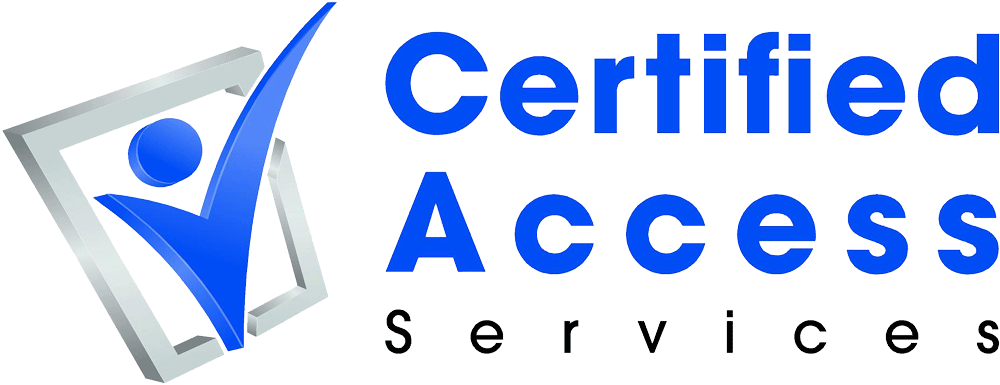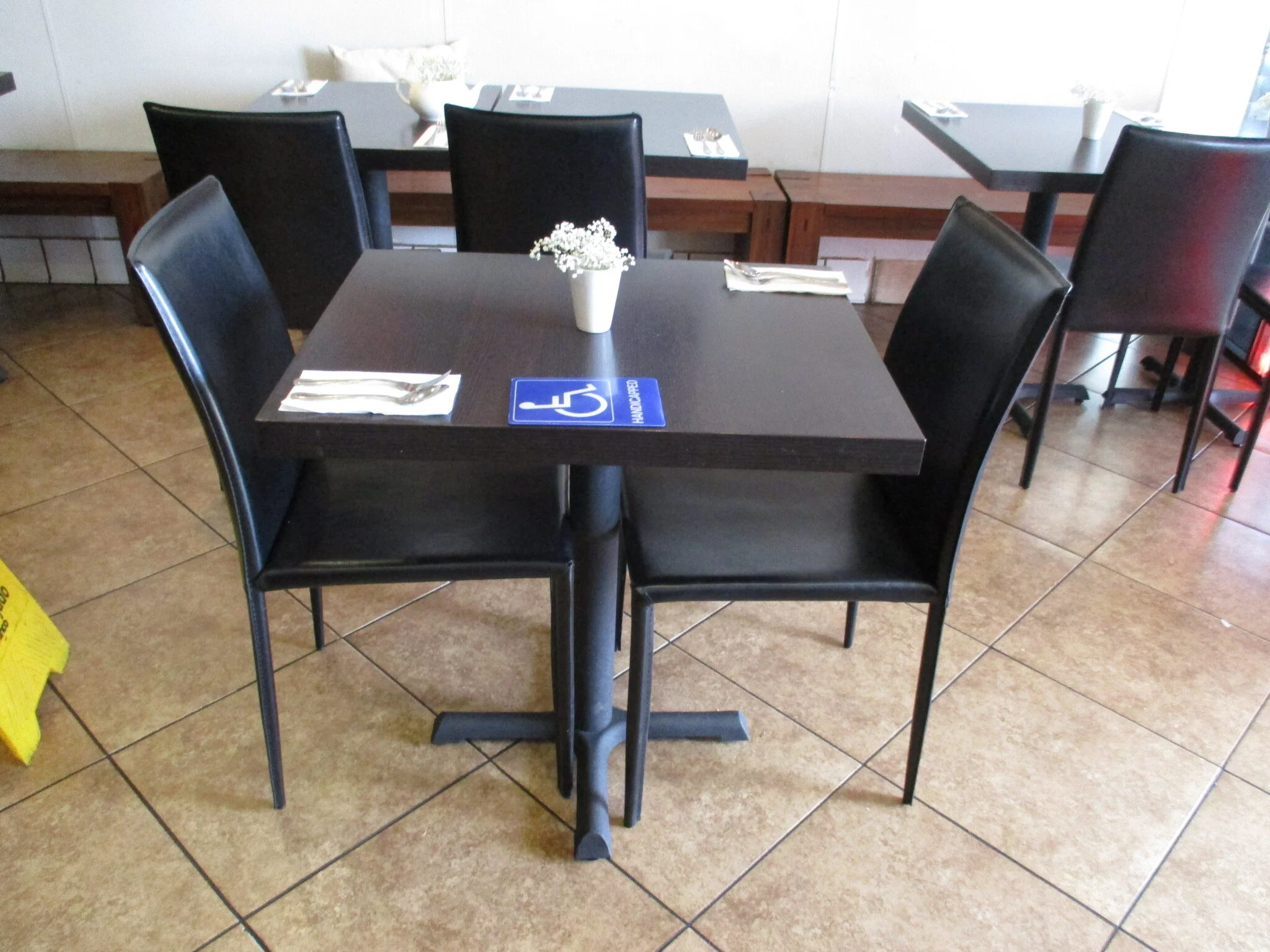MYTH - Tables with an ISA are accessible
/MYTH:
This table is accessible because the sticker says so.
FACT:
Dining tables with a centered post and base are rarely accessible.
Accessible Dining Table Requirements.
Most people think that all low tables are accessible but table height is only one consideration. While the top of the table surface shall be 28”-34” in height, knee and toe clearance is also required. Imagine a box that is 27” tall by 30” wide by 19” deep. This box represents the minimum knee and toe clearance required to be provided under the table. If the box can slide all the way under the table without striking any obstructions such as table leg or feet hardware, then the table is accessible. If for instance, the box can only slide 12” below the table before striking the table base, then it cannot be considered accessible. Tables with a single post down the center of the table are rarely accessible because they do not provide 19” of clearance between the edge of the table top and the table base.
Contact a Certified Access Specialist (CASp)
There are many nuances and interactions between state and federal requirements. We highly recommend that you consult with a CASp if you have any questions about your facility. Please don’t hesitate to contact us.


